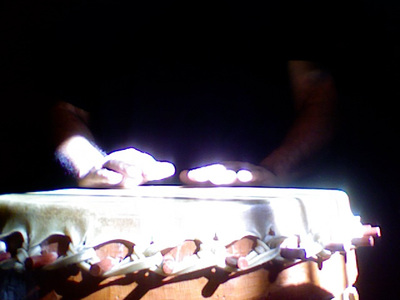CLICK
ON ANY CHAPTER
ON YOUR LEFT
FOR ADDITIONAL INFORMATION
ON EACH SUBJECT
ON ANY CHAPTER
ON YOUR LEFT
FOR ADDITIONAL INFORMATION
ON EACH SUBJECT
"I am playing my huehuetl,
I who hunt for songs to awaken and fire our friends
whose hearts lie listless,
for whom the day does not yet break-
those who sleep in comas,
those who glory in gloomy night when
the flowering dawn already sings her song
and when once again morn lightens the place where
huehuetls play..........."
the poem XOPAN CUICATL
from
CANTARES EN IDIOMA MEXICANO
CLICK
on the link below to
LISTEN
christophergarciamusicprojects.bandcamp.com/track/xopan-cuicatl-poema-de-cantares
BIENVENIDOS
Whether playing
solo,
duo
or with an ensemble,
a chamber orchestra,
a symphony orchestra
a theatrical production,
or a danza group
several questions are always asked after each performance
from the audience about the names,
origins and histories of the instruments
This site lists some (not all) of the indigenous instruments
of Mexico and Mesoamerica
with traditional images from
the codices
lintels
murals
pottery
stelae
i.e.,
MAYAN, MEXIKA, MIXTEC and ZAPOTEC CODICES
and more
as well as modern day images wherever possible,
and modern day practitioners
(the information continues to grow and expand
as additional sites are found daily
The instruments are listed in several different languages,
as the same instruments were known by different names depending
on the region, the people and their language
My hopes are that this information goes out
to let people know
1)
that these instruments which have been radio carbon dated to 100 B.C.,
or potassium argun dated
and continue to be used by modern day practitioners
of which I am one,
with little to no changes to the instruments themselves
they are not "ancient" or forgotten and collecting dust in a museum somewhere
behind a glass case and they continue to be played daily in modern day Mesoamerica
and Mexico
The AZTEC exhibit in Melbourne Australia was going strong when I was there
April 2014 and the local Mexican communities there were performing danza
at the exhibit!!!!!
9,000 miles away
2)
there are many practitioners,
mostly from Mexico
who continue to perform, teach, record and document their work
since 1980
each with dozens of amazing recordings
(see link below for a list of MUSICOS and ensembles )
solo,
duo
or with an ensemble,
a chamber orchestra,
a symphony orchestra
a theatrical production,
or a danza group
several questions are always asked after each performance
from the audience about the names,
origins and histories of the instruments
This site lists some (not all) of the indigenous instruments
of Mexico and Mesoamerica
with traditional images from
the codices
lintels
murals
pottery
stelae
i.e.,
MAYAN, MEXIKA, MIXTEC and ZAPOTEC CODICES
and more
as well as modern day images wherever possible,
and modern day practitioners
(the information continues to grow and expand
as additional sites are found daily
The instruments are listed in several different languages,
as the same instruments were known by different names depending
on the region, the people and their language
My hopes are that this information goes out
to let people know
1)
that these instruments which have been radio carbon dated to 100 B.C.,
or potassium argun dated
and continue to be used by modern day practitioners
of which I am one,
with little to no changes to the instruments themselves
they are not "ancient" or forgotten and collecting dust in a museum somewhere
behind a glass case and they continue to be played daily in modern day Mesoamerica
and Mexico
The AZTEC exhibit in Melbourne Australia was going strong when I was there
April 2014 and the local Mexican communities there were performing danza
at the exhibit!!!!!
9,000 miles away
2)
there are many practitioners,
mostly from Mexico
who continue to perform, teach, record and document their work
since 1980
each with dozens of amazing recordings
(see link below for a list of MUSICOS and ensembles )
3)
some modern day educators are involved in:
instrument making workshops,
library presentations
community dance and drum groups
while others travel worldwide doing all of the above and more
presenting the beauty, culture, history, instruments and resonance
of the indigenous peoples of Mesoamerica and Mexico
not only based on the MEXICA/AZTECA people
There will always be many more doors for us to open,
peek thru and hopefully walk thru
and discover more of the culture and its past
our ancestral past
as we continue to CELEBRATE
instead of TOLERATE our differences
AQUI Y AHORA
HERE NOW AND NOWHERE ELSE
VIVA LA GENTE
WE ARE EACH INDIGENOUS TO THIS PLANET
Christopher Garcia
some modern day educators are involved in:
instrument making workshops,
library presentations
community dance and drum groups
while others travel worldwide doing all of the above and more
presenting the beauty, culture, history, instruments and resonance
of the indigenous peoples of Mesoamerica and Mexico
not only based on the MEXICA/AZTECA people
There will always be many more doors for us to open,
peek thru and hopefully walk thru
and discover more of the culture and its past
our ancestral past
as we continue to CELEBRATE
instead of TOLERATE our differences
AQUI Y AHORA
HERE NOW AND NOWHERE ELSE
VIVA LA GENTE
WE ARE EACH INDIGENOUS TO THIS PLANET
Christopher Garcia

